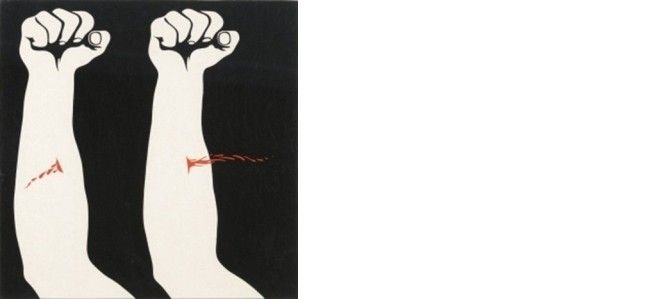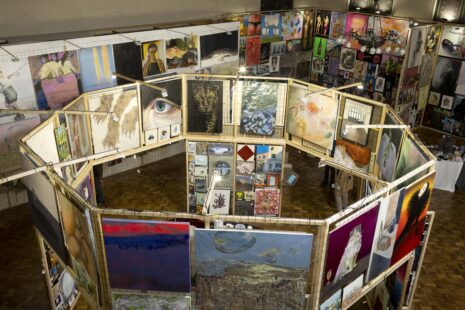
Leonhard lapin. Fountain. 1972. Art Museum of Estonia
The Sixties was a decade of youth culture not only in the Anglo-Americanised West, but also in the Soviet Union, with its reactionary official cultural policy.
The Sixties saw the arrival of Pop Art in Estonia. The turnaround that reformed the understanding of high culture and low culture, professionalism and creativity, copying and kitsch, could today be called a paradigm change. Although initially it was just a marginal phenomenon in art life, the principles introduced into art by young artists began to appear in the work of their older colleagues, as well as in applied art, fashion, interior design and film. The aesthetics and ideology of Modernism were exchanged for pop culture.
Pop Art as a separate art form reached the public via two exhibitions: SOUP’69, held in 1969 in the Pegasus café in Tallinn, and Progressive Estonian Artwork in 1970, in the same venue. The organisers were Ando Keskküla, Leonhard Lapin and Andres Tolts, who were studying design and architecture at the time at the Estonian State Art Institute. Most of the exhibits were assemblages and pop-objects. The work did not correspond with the accepted notion of professionalism, but it was defiantly confident, and contained everything: clumsiness, experimentation, playfulness and stretching the limits.
Curator: Sirje Helme
Exhibition designer: Kaido Ole
Designer: Laura Grigaliūnaitė
Organisers: National Gallery of Art, Lithuanian Art Museum, Art Museum of Estonia
Partners: Tartu Art Museum, University of Tartu Art Museum, Tallinn Art Hall, Estonian Film Institute, National Library of Estonia
Sponsors: Lithuanian Council for Culture, Ministry of Culture of the Republic of Lithuania, Embassy of Estonia in Vilnius, BEST WESTERN Vilnius, Exterus
Media sponsors: artnews.lt, echogonewrong.com
The exhibition will remain open until 6 September, 2015.
More information: Lithuanian National Gallery of Art








